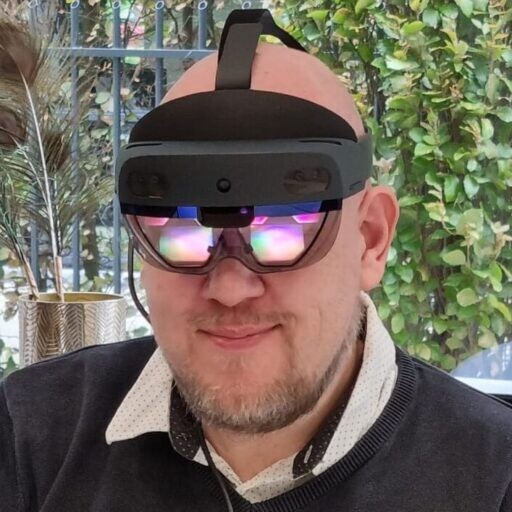
Imagine a world where you don’t need to tap, swipe, or type on a screen to get things done. A world where you can simply speak, gesture, or think your intentions and have them fulfilled by a smart device that understands you. A world where you can seamlessly switch between different modes of interaction, depending on your context, preference, and mood.
Sounds like science fiction, right? Well, not anymore.
Welcome to the era of intent-driven computing action; where smartphones are giving way to new form factors like wearables and light head-mounted devices that offer a more natural, immersive, and personalized experience.
In this article, we’ll explore how the paradigm shift from smartphones to new form factors is happening right now, and what it means for you. We look at some of the latest buzz around the rabbit r1 with rabbit os, the Humane AI Pin, and Apple Vision Pro, three innovative and disruptive products in this space. We will also discuss how these technologies represent a move away from app-driven operating systems to intent-driven devices, and how this shift is reflected in the public’s growing interest in wearables and head-mounted devices. Finally, we conclude with a strong argument that the combination of smart glasses could be the ultimate mix with the best of both worlds.

Rabbit r1: a carrot for the intent-driven os
The rabbit r1 companion with rabbit os is a handheld device that has a push-to-talk button to tell the Large Action Model (LAM) what you want it to do. You can ask it to play music, take photos, send messages, book flights, order food, and so much more. The rabbit r1 runs on rabbit os, an intent-driven operating system that learns from your behavior and preferences to anticipate your needs and offer personalized suggestions. Rabbit os is compatible with multiple different platforms thanks to a virtualized backend, so you can seamlessly interact with any of them without losing context or continuity.

Humane AI Pin: your wearable assistent
The Humane AI Pin is a wearable device that looks like a small badge that you can clip on your clothing. It is a smart assistant that can help you with many things you need. It uses natural language processing (NLP) and artificial intelligence (AI) to understand your voice commands and queries. You can use it to access information, entertainment, productivity, health, and wellness services. The Humane AI pin is designed to respect your privacy, so it only listens when you tap it.

Apple Vision Pro: Spatial Computing era
Apple Vision Pro is a head-mounted device that looks like a pair of sleek glasses that you can wear anywhere. It is actually a revolutionary device that can transform your vision and perception of reality. It uses advanced optics, sensors, cameras, and processors to create stunning visual effects and experiences. You can use it to access virtual reality (VR) content that transports you to another world or dimension. You can also use it to access mixed reality (MR) content that blends digital elements with your physical environment. You can interact with it using voice, touchpad, or hand gestures. Apple Vision Pro runs on Apple visionOS an app-driven operating system that offers a rich ecosystem of apps and services for various purposes and domains.
These three products are examples of how the paradigm shift from smartphones to new form factors is happening right now. The rabbit r1 and Humane AI Pin are also examples of how the paradigm shift from app-driven operating systems to intent-driven ones is on its way. App-driven operating systems like Android and iOS are based on the idea that you have to launch an app or service to perform a task or access content. Intent-driven operating systems are based on the idea that you can simply express your intention or goal and have it automatically fulfilled by AI.
So in closing, the future of computing looks like a huge increase of AI-powered intent-driven operating systems in smaller wearables.
Will it ultimately replace your smartphone?
Most likely, just not in the next two years.
But in 2030? Who knows. Or better put: whose nose





